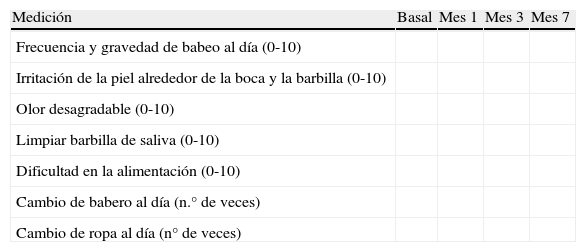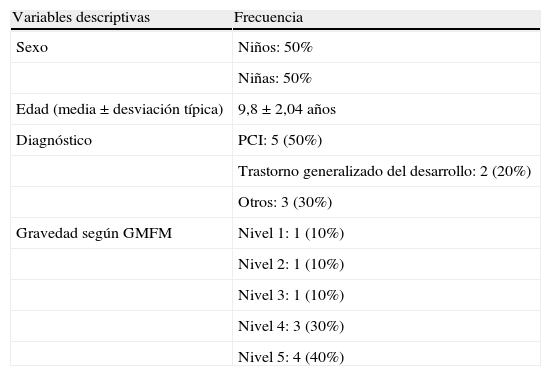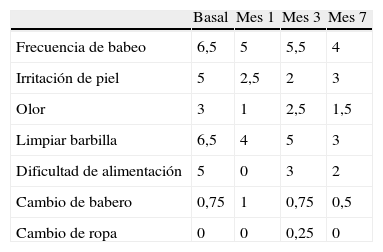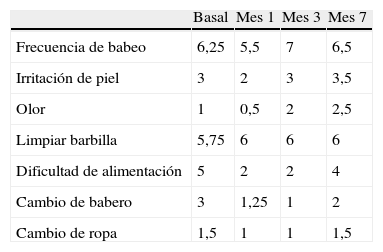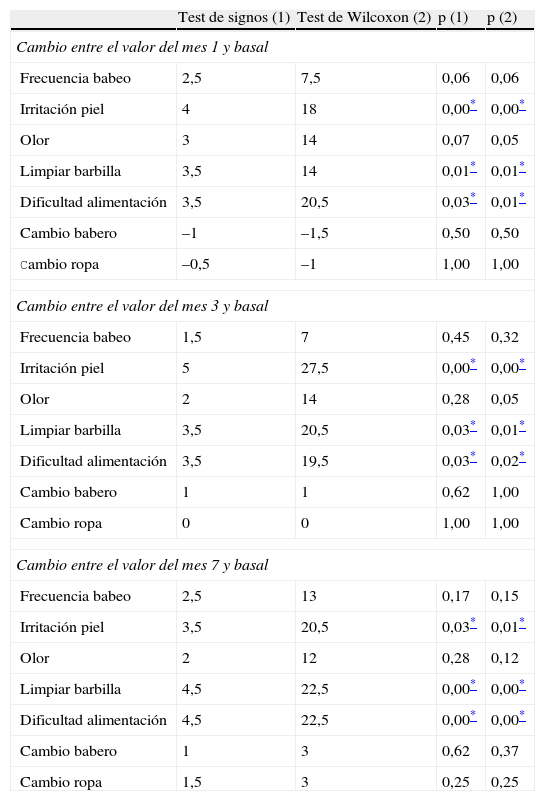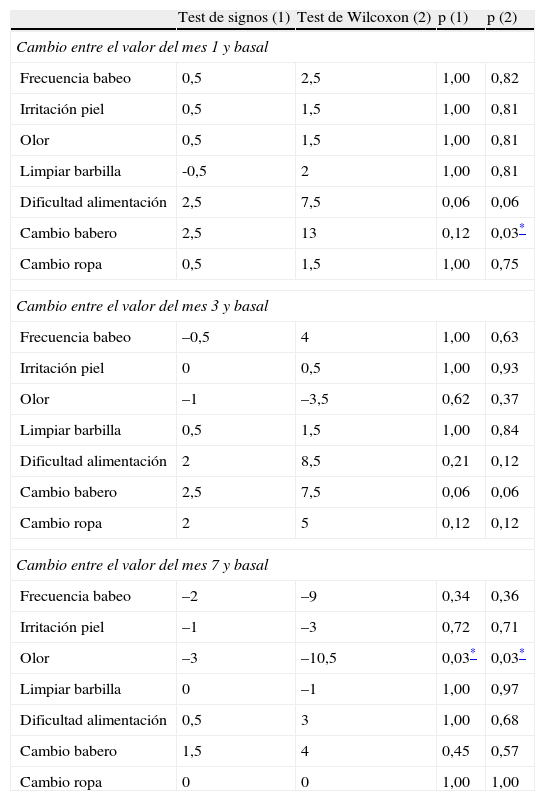Estudiar la eficacia del kinesiotaping en el control de la deglución de la saliva en niños afectados por sialorrea.
Material y métodosEnsayo clínico no controlado antes-después en el que se reclutaron niños con problemas de sialorrea. El tratamiento consistió en la aplicación de kinesiotaping en la zona de hioides. Se valoró la eficacia mediante una escala que valora la frecuencia del babeo, irritación de la piel, olor desagradable, necesidad de limpiar la barbilla, dificultad para la alimentación, necesidad de cambiar de babero y necesidad de cambiar de ropa. Se realizó una medición basal, al mes, a los 3 meses y a los 7 meses de haber comenzado la intervención. Los datos de la evaluación fueron recogidos por las auxiliares de educación especial y por los padres.
ResultadosEn la valoración realizada por el personal auxiliar de educación especial hay una menor irritación en la piel, hay que limpiar un menor número de veces la barbilla y hay una menor dificultad en la alimentación. En la valoración realizada por los padres solo hay diferencias significativas en el ítem de cambio del babero y en el olor.
ConclusiónHay escasos estudios sobre este tema, pero los resultados coinciden con 2 estudios previos existentes; no obstante, es necesario profundizar en la eficacia del kinesiotaping en la sialorrea.
To study the efficacy of Kinesiotaping in the control of the deglutition of the saliva in children affected by ptyalism.
Material and methodsUncontrolled clinical trial before-after in which 10 children with problems of ptyalism were recruited. The treatment consisted of the application of Kinesiotaping in the area of the hyoid bone. Efficacy was assessed by a scale measuring frequency of dribbling, skin irritation, unpleasant smell, need for cleaning the chin, feeding difficulty, need for changing the bib and need for changing clothes. Basal measurements were made at the beginning, at one month, at three months, and seven months after starting the trial. The assessment data assessment were collected by the Special Needs Assistants and the parents.
ResultsIn the assessment carried out by the Special Needs Assistants there is less irritation of the skin, the chin has to be cleaned fewer times and it is less difficult to feed children. In the assessment carried out by the parents significant differences are only found in the items of changing the bib and of the smell.
ConclusionThere are few studies on this topic but our results coincide with two previous studies. Nevertheless, it is necessary to further study the efficacy of Kinesiotaping in ptyalism.
Artículo
Si ya tiene sus datos de acceso, clique aquí.
Si olvidó su clave de acceso puede recuperarla clicando aquí y seleccionando la opción "He olvidado mi contraseña".Comprando el artículo el PDF del mismo podrá ser descargado
Precio 19,34 €
Comprar ahora









